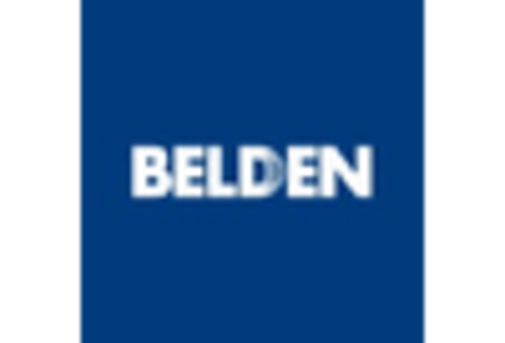Increased Focus on Automation and Robotics
The time sensitive-networking market benefits from a growing focus on automation and robotics across industries.. As companies strive to enhance productivity and reduce operational costs, the integration of automated systems is becoming more prevalent. The robotics market alone is expected to reach $50 billion by 2026, with a significant portion of this growth attributed to the need for efficient networking solutions. Time sensitive networking plays a crucial role in ensuring that robotic systems can communicate effectively and respond in real-time. This trend is likely to drive further investments in the time sensitive-networking market, as organizations seek to leverage automation for improved operational efficiency.
Growing Demand for Real-Time Data Processing
The time sensitive-networking market is experiencing a notable surge in demand for real-time data processing capabilities. Industries such as manufacturing, healthcare, and transportation are increasingly reliant on instantaneous data transmission to enhance operational efficiency. For instance, the manufacturing sector is projected to invest approximately $5 billion in real-time data solutions by 2026. This trend is driven by the need for timely decision-making and improved automation processes. As organizations seek to optimize their workflows, the time sensitive-networking market is positioned to benefit significantly from this growing demand. Furthermore, the integration of advanced technologies such as IoT and AI is likely to further propel the need for real-time data processing, thereby solidifying the market's relevance in various sectors.
Rising Need for Enhanced Network Performance
The time sensitive-networking market is greatly influenced by the rising need for enhanced network performance across sectors.. Organizations are increasingly recognizing the importance of low-latency communication and high reliability in their networking solutions. For example, the financial services sector is projected to allocate around $3 billion towards improving network performance by 2025. This investment is driven by the necessity for real-time transaction processing and data analysis. As businesses strive to maintain a competitive edge, the demand for advanced networking solutions that can deliver superior performance is likely to escalate, thereby benefiting the time sensitive-networking market.
Expansion of Smart Infrastructure Initiatives
The time sensitive-networking market is set to grow due to expanding smart infrastructure initiatives in the United States.. Government and private sector investments in smart cities and connected infrastructure are expected to reach $100 billion by 2027. These initiatives necessitate robust networking solutions that can support the seamless exchange of data among various devices and systems. As cities become more interconnected, the demand for time sensitive networking solutions that ensure low-latency communication will likely increase. This trend not only enhances urban living but also drives the adoption of innovative technologies, thereby creating a fertile ground for the time sensitive-networking market to thrive.
Emergence of Advanced Communication Technologies
The time sensitive-networking market is growing due to the emergence of advanced communication technologies.. Innovations such as 5G and edge computing are transforming the way data is transmitted and processed. The 5G market is projected to reach $700 billion by 2028, with a substantial impact on networking solutions. These technologies enable faster data transfer rates and lower latency, which are essential for time sensitive applications. As industries adopt these advanced communication technologies, the demand for time sensitive networking solutions is likely to increase, positioning the market for substantial growth in the coming years.




















Leave a Comment